For users of OS X, Windows and Linux systems, changing the size of the desktop icons is a very simple operation, which takes place by selecting an empty spot on the desktop with the right mouse button to access the settings under "Properties", "View" or "View Options". Unfortunately, when it comes to iOS or Android devices, things get slightly complicated, as icon resizing is not supported by any of the platforms. Fortunately, some manufacturers have added this feature to their Android mobile devices. If you have an iOS device, don't despair if the icons appear comically large: just turning off the "Zoom" function may be enough to solve the problem. Read on to learn how to change the size of desktop icons using any version of Windows, OS X and some Android systems. You will also discover how to disable the "Zoom" function of an iPhone or iPad.
Steps
Method 1 of 5: Disable the Zoom Function on iOS Systems
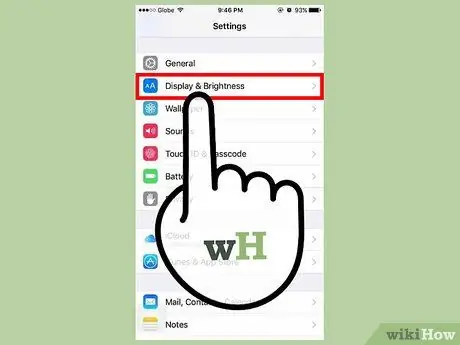
Step 1. Access the Settings application, then choose the "Display and brightness" item
While there is no option to change the size of the icons on the iPhone and iPad, there is a solution when abnormally large icons appear on the screen. If for some unusual reason your device has activated the "Zoom" feature, deactivating it is a very simple procedure.
If the icons are too large to prevent you from browsing the Settings application, double tap the screen using three fingers to activate the "zoom out" function, then try again to access Settings
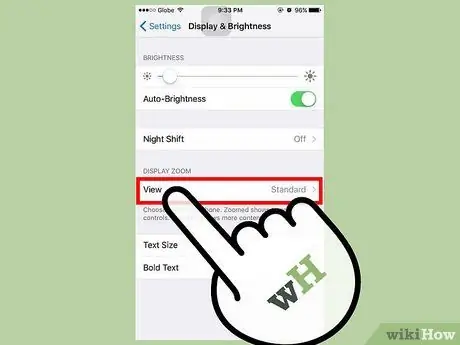
Step 2. Look for "View" in the "Zoom Screen" section
You have two options at your disposal:
- "Standard": in this case the zoom is disabled and the size of the icons is the standard one, so you do not have the possibility to reduce them further.
- "With zoom": in this case the zoom is active, so to decrease the size of the icons you must set the "Standard" mode.
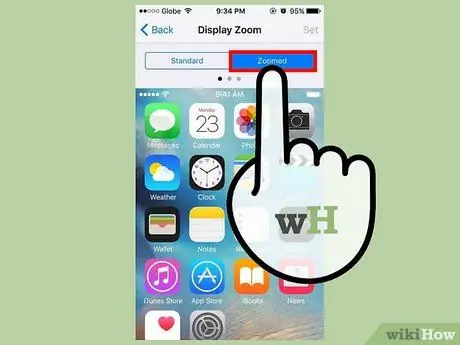
Step 3. If present, tap "With zoom"
At this point, you should see a new screen displaying "Screen Zoom" at the top.
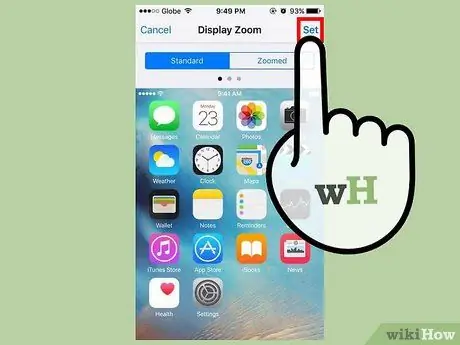
Step 4. Select the "Standard" entry, then tap the "Set" option
In this way, the size of the Home screen (and of the icons it contains) will be restored to normal.
Method 2 of 5: Android

Step 1. Keep your finger pressed on an empty spot on the Home screen
Some Android device manufacturers offer the ability to customize the size of the graphical interface icons. On some Sony smartphone models, this action results in a toolbar being displayed at the bottom of the screen.
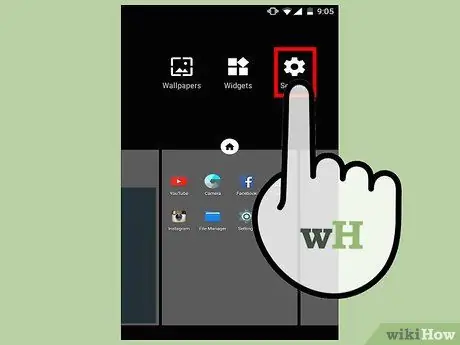
Step 2. Choose "Home Settings" or "Desktop Settings"

Step 3. To view the options related to the resizing of the icons, choose the item "Icon size"
Some smartphones offer two options: Small or Large. Other devices may allow for more specific customization.

Step 4. Choose the "Small" item, then return to the Home screen to see the new changes
Method 3 of 5: Windows 10, 8.1, 7, and Vista
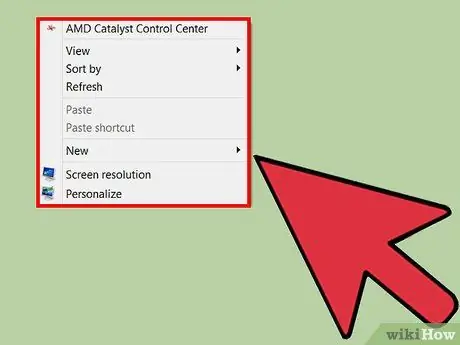
Step 1. Select an empty spot on the desktop with the right mouse button
A context menu will appear showing several options.
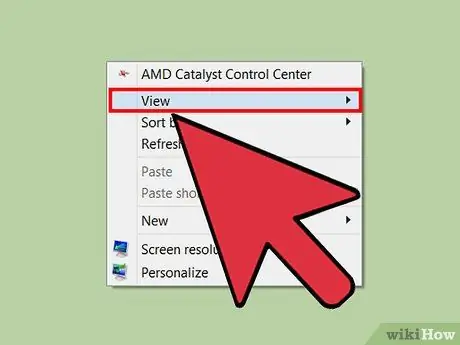
Step 2. Choose the "View" item to access a new submenu
The three options that appeared at the top of the menu are related to icon resizing. The currently selected option is indicated by a check mark or a bullet on the left.
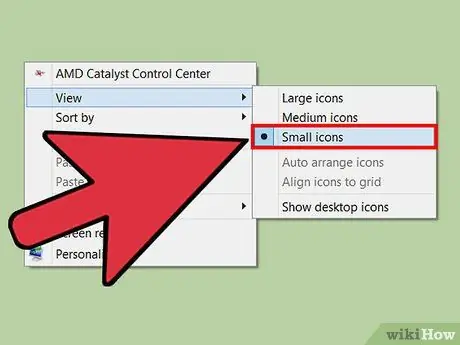
Step 3. To reduce the size of the icons on the desktop, choose the "Medium icons" or "Small icons" option
If the current size of the icons is set to "Large icons", try to reduce them slightly by choosing the "Medium icons" item. If the latter option is already selected, set the item "Small icons".
On Windows Vista systems, the "Small Icons" option is indicated by "Classic Icons"
Method 4 of 5: OS X systems

Step 1. Select an empty spot on the desktop with the right mouse button, then choose the "Show view options" item
A dialog box will appear that contains options for customizing the look and feel of the desktop.
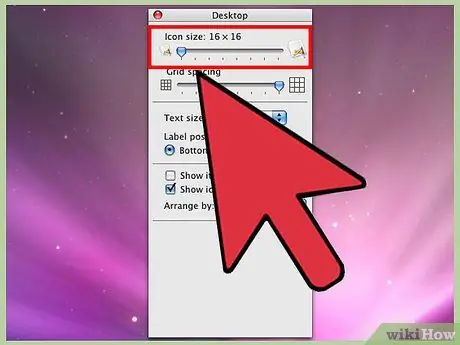
Step 2. Move the "Icon Size" slider to the left
The current size of the icons, expressed in pixels, is shown next to the words "Icon size:" in the upper part of the window that appears (for example 48x48). As you move the indicated slider to the left, the "Icon size:" value will decrease.
- The lower the number displayed, the smaller the icons will be.
- The smallest selectable size is 16x16, while the largest is 128x128 pixels.

Step 3. To apply the changes and close the dialog, press the red "Close" button in the upper right corner
If you are not satisfied with the new look of your desktop, go back to the "View Options" window, then try to choose a different icon size.
Method 5 of 5: Windows XP
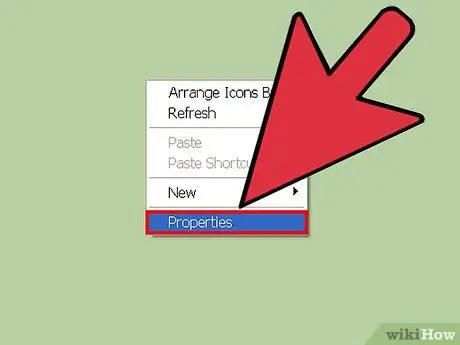
Step 1. Select an empty spot on the desktop with the right mouse button, then choose "Properties"
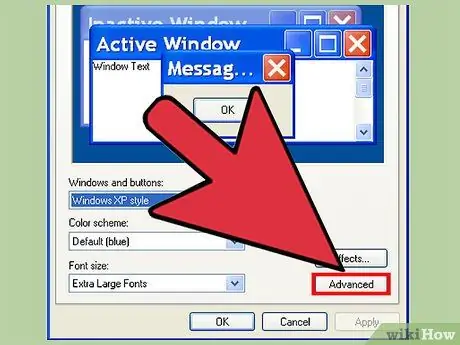
Step 2. Press the Advanced button located in the "Appearance" tab
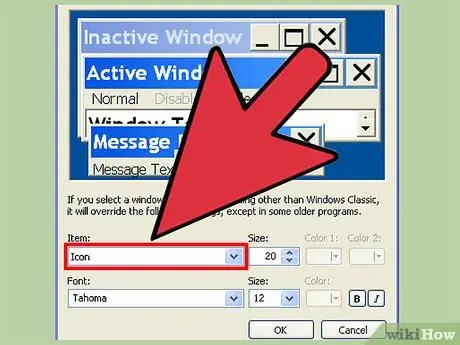
Step 3. Choose the "Icon" item from the "Element" drop-down menu
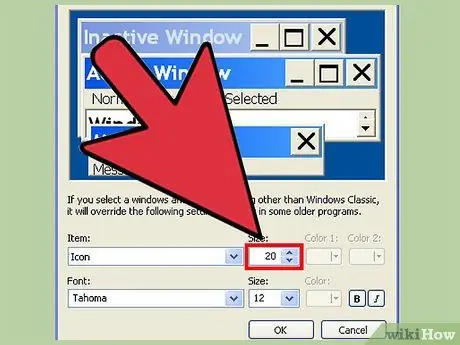
Step 4. In the "Size" field, enter a value lower than the current one
On the right side of the "Size" field (which shows the current size of the icons in pixels) there are two arrow-shaped buttons: one facing up, the other down. Use them to change the size of the icons.
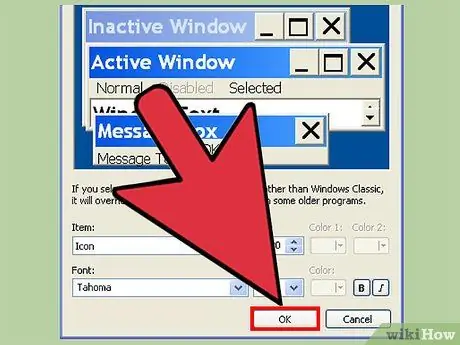
Step 5. When finished, press the "OK" button to save the changes made and return to the desktop
If you are not satisfied with the new appearance of the icons, return to the "Advanced Appearance Settings" window to change them again.
Advice
- In both Windows and OS X systems, you can manually place icons on the desktop by simply selecting them with the mouse and dragging them to the desired location.
- If you're using an original version of Android and like the idea of customizing your devices using new applications, try installing a custom launcher. Launchers are applications for managing the graphical interface and its features. Changing the launcher will change the appearance and behavior of the Home of your Android device. Launchers often also allow you to resize icons.






